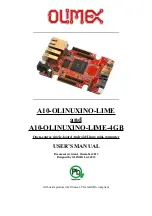
©
National Instruments Corporation
25
NI sbRIO-961x/9612XT/963x/9632XT/964x/9642XT
Signal Integrity
NI sbRIO boards have a 60
Ω
characteristic trace impedance. The
characteristic impedance of most IDC ribbon cables is 110
Ω
, which is
grossly mismatched from the board. However, headers P2–P5 were
designed such that the signals are interwoven with ground
(signal/ground/signal/ground, etc.), which greatly improves the signal
integrity. This is sufficient for most applications
For the best possible signal integrity, use a 3M 3353 series ribbon cable,
which has a characteristic impedance of 65
Ω
. This cable has a ground
plane that connects to the ground plane of the board at pin 1 and pin 50. The
internal ground plane of this cable also reduces noise and radiated
emissions.
Using +5 V Power from 3.3 V DIO Headers P2–P5
Each of the four DIO headers has two pins to p5 V power for
external applications. These +5 V outputs are referenced to D GND on the
headers and are connected directly to the internal 5 V power plane of the
NI sbRIO device. The +5 V source has current limiting and overvoltage
clamps. Nevertheless, sudden current steps and noisy loads can inject
high-frequency transients into the power planes of the device. Such
transients can cause intermittent failures in the digital timing and lead to
unexpected behavior. Add filters and/or additional current limiting
between the external load and the +5 V output if the external load is not a
quiet, slowly ramping DC load. An LC filter of 6.8
μ
H and 100
μ
F per
200 mA load should be sufficient, but the OEM user is responsible for final
requirements and testing.
The NI sbRIO power supply has a total of 2 A external load at 5 V. This
total includes 200 mA per installed C Series module. For example, if three
C Series modules are installed, only 2 A – (3 × 0.2) = 1.4 A is available for
use on headers P2–P5. Each pin on the headers is rated for 2 A, but a typical
28 AWG ribbon cable is rated for only 225 mA per conductor. The OEM
user is responsible for determining cabling requirements and ensuring that
current limits are not exceeded.









































